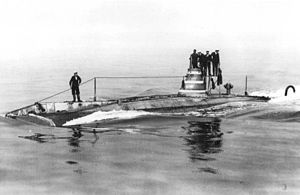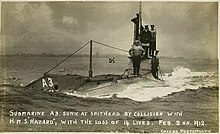HMS A2 was an A-class submarine built for the Royal Navy in the first decade of the 20th century.

HMS A6 was an A-class submarine built for the Royal Navy in the first decade of the 20th century.

HMS A11 was an A-class submarine built for the Royal Navy in the first decade of the 20th century. After surviving World War I, she was sold for scrap in 1920.
HMS Spiteful was a third-batch S-class submarine built for the Royal Navy during the Second World War.

HMS Salmon was a second-batch S-class submarine built during the 1930s for the Royal Navy. Completed in 1935, the boat fought in the Second World War. Salmon is one of twelve boats named in the song "Twelve Little S-Boats".

HMS D1 was one of eight D-class submarine built for the Royal Navy during the first decade of the 20th century.

HMS C7 was one of 38 C-class submarines built for the Royal Navy in the first decade of the 20th century. The boat survived the First World War and was sold for scrap in 1920.
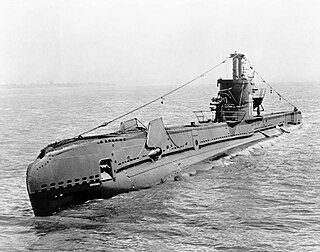
HMS Stonehenge was an S-class submarine of the third batch built for the Royal Navy during World War II. Completed in 1943, she made her initial patrol off Norway and was then transferred to the Far East, where she conducted two war patrols, during which she sank two Japanese ships. On her second patrol, Stonehenge disappeared with all hands and was declared overdue on 20 March 1944. The most probable cause of her sinking is that she hit a mine, but her wreck has never been found.

HMS Simoom was a third-batch S-class submarine built for the Royal Navy during World War II. She was laid down on 14 July 1941 and launched on 12 October 1942.
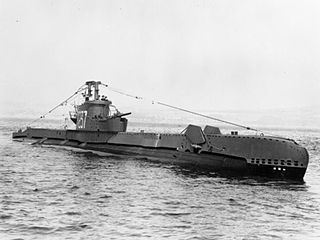
HMS Scythian was a S-class submarine of the third batch built for the Royal Navy during World War II. She survived the war and was sold for scrap in 1960.
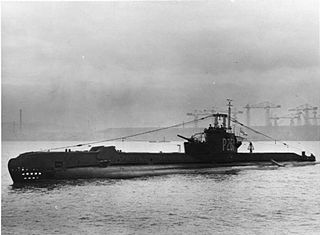
HMS Sleuth was a S-class submarine of the third batch built for the Royal Navy during World War II. She survived the war and was sold for scrap in 1958.

HMS Spur was a S-class submarine of the third batch built for the Royal Navy during World War II. She survived the war and was sold to Portugal in 1948.

HMS Sterlet was a second-batch S-class submarine built during the 1930s for the Royal Navy. Completed in 1938, the boat fought in the Second World War. The submarine is one of the 12 boats named in the song Twelve Little S-Boats. Thus far she has been the only ship of the Royal Navy to be named Sterlet.
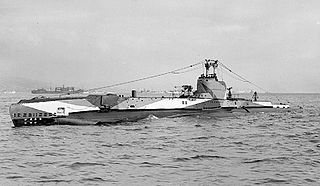
HMS Sealion was a second-batch S-class submarine built during the 1930s for the Royal Navy. Completed in 1934, the boat fought in the Second World War.
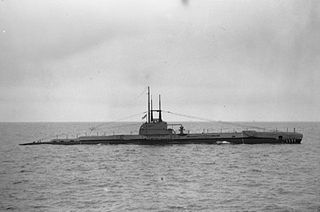
HMS Seawolf was a second-batch S-class submarine built during the 1930s for the Royal Navy. Completed in 1936, the boat fought in the Second World War.

HMS L9 was an L-class submarine built for the Royal Navy during World War I. The boat survived the war and was sold for scrap in 1927.
HMS L24 was a L-class submarine built for the Royal Navy during World War I. The boat was not completed before the end of the war and was sunk in an accidental collision in 1924.

HMS P222 was a third-batch S-class submarine built for the Royal Navy during World War II. Commissioned in 1942, the boat had an uneventful first war patrol in the Alboran Sea. She intercepted the Vichy French merchant ship SS Mitidja in July, then provided protection for an Allied convoy to Malta in Operation Pedestal the next month. The navy intended that she was to be sighted on the surface by enemy aircraft to discourage potential attacks by surface warships. Though P222 did not encounter enemy forces, the convoy arrived at its destination on 15 August after sustaining severe losses. She then reconnoitred along the coast of Algeria in advance of Operation Torch, and was attacked by a French patrol ship, but sustained no damage.
HMS B2 was one of 11 B-class submarines built for the Royal Navy in the first decade of the 20th century.

HMS Rainbow was a Rainbow-class submarine built for the Royal Navy during the 1930s.
